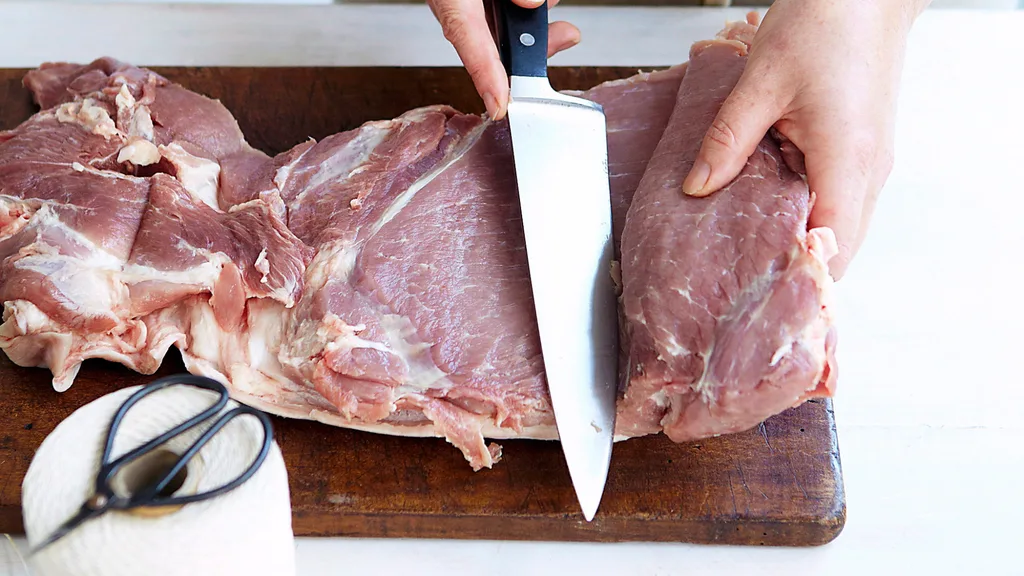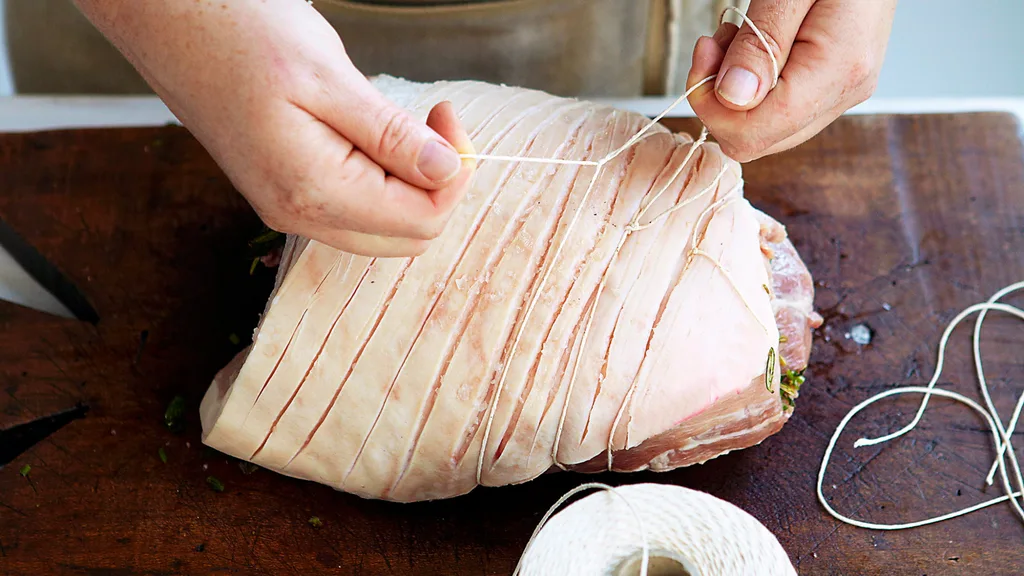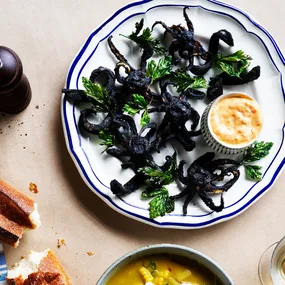Porchetta is the roast pork of choice in central Italy. It’s often sold by street vendors outside shopping plazas, at festivals and in marketplaces (one great porchetta stand that springs to mind is the one in Rome’s famed Campo de Fiori marketplace). In fact, it’s such an important part of local cuisine in the Lazio region that Porchetta di Ariccia has been awarded Protected Geographical Indication status by the European Union.
This means there are specific details in how that particular type of porchetta is made. So, let’s start with a few basic details before going into our recipe.
What is porchetta?
The term “porchetta” traditionally refers to a whole, boned and roasted young pig (not to be confused with a whole roasted suckling pig, or maialino). And specifically, it refers to one that has been flavoured with herbs, garlic and seasoning, then cooked until the skin turns to golden crackling. Under the official guidelines, Porchetta di Ariccia, for example, must include the flavours of rosemary, pepper and garlic. In other regions, such as Umbria, wild fennel is typically used.
How do you make porchetta?
Porchetta is prepared by boning the pig, singeing and scalding the pig’s skin, and stuffing it with its own offal, fresh herbs and other seasonings, according to Gillian Riley’s The Oxford Companion to Italian Food. It’s then secured with string and roasted slowly in a woodfired oven. Traditional porchetta vendors serve it cold and thinly sliced to order, often between slices of bread.
“The expression ‘in porchetta’ can mean ‘cooked and seasoned like a whole roast pig’, usually with fennel, the characteristic seasoning,” writes Riley, “but can be applied to other meats, or to fowl…”.
Following this logic, we’ve called our version of porchetta “pork shoulder alla porchetta”, as we’ve used only the shoulder of the pig but cooked it in the manner of the whole pig. We’ve also included more details and a visual guide after the core recipe.
Porchetta recipe
Ingredients
Method
Score pork skin at 1cm-2cm intervals.
Bring a saucepan of water to the boil over high heat. Place pork skin-side up in a colander over sink and pour over boiling water, then pat dry with absorbent paper.
Scatter salt over skin, rub into cuts, transfer to a tray lined with baking paper and refrigerate, uncovered, until skin is dried (overnight).
Dry-roast fennel seeds in a small frying pan (1 minute).
Crush fennel seeds in a mortar and pestle, add herbs and garlic, crush to a coarse paste and set aside.
Preheat oven to 130C. Place pork skin-side down on a board and make an incision from the centre horizontally outwards through the middle of the meat, stopping short of the end. Repeat with other half of pork then open out to make one long flat piece.
Spread with herb mixture, fold in ends, roll to enclose tightly and turn pork skin-side up.
Tie at intervals with kitchen string, rub with oil and roast in a roasting pan until pork is just cooked and juices run clear when meat is pierced (3-3½ hours).
Increase oven to 250C. Drain fat (reserve for roast potatoes; see recipe below), add wine to pan (but not over pork) and roast until skin crackles (20-30 minutes). Set aside in a warm place to rest (30 minutes), remove crackling, carve meat, and serve meat and crackling hot with pan juices and roast potatoes.
More details and tips for making porchetta
Porchetta is more involved than a roast you simply put in the oven, but it’s definitely worth the effort. So if you’re eager to make it as authentically Italian as possible, here are our insights from the cooking process.
Preparing the skin and the stuffing
For the best crackling, the skin should be as dry as possible. With a sharp knife or a Stanley knife, carefully score it at intervals of about 1cm to 2cm. To help open up the cuts, pour boiling water over the skin (avoid the flesh), then pat it dry with absorbent paper. Scatter it with plenty of sea salt, rubbing it into the cuts to draw out moisture. If you have the time, you can dry the skin even further by leaving the pork uncovered in the refrigerator overnight.
For the stuffing, we’ve used roasted fennel seeds crushed in a mortar and pestle with a mix of fresh Italian herbs – oregano, parsley, rosemary – and some garlic, but you could use a small food processor if you prefer.

Step 1.
Stuffing the porchetta
To create a pocket for the stuffing, you’ll need to butterfly the pork. Turn the pork skin-side down and carefully make an incision from the centre horizontally outwards through the middle of the meat, stopping short of the end. Repeat with the other half of the pork, then open out the two flaps so the pork is one long flat piece.

Step 6.
Spread the herb stuffing over the flesh, fold each side back in, then roll the pork tightly to enclose the stuffing. Secure the roll at intervals with kitchen string.

Step 7.
When you tie the pork, the string should be firm enough to secure it but not too tight that there are bulges. Ideally, you want an even level of pressure across the pork to help with cooking.

Step 8.
How to get good crackling
For the crackling on your porchetta, you need to start or finish the cooking process with a blast of high heat. We prefer to start the cooking at a low temperature so the meat stays succulent, then drain off the pan juices and deglaze the pan with a little wine before giving the meat a final blast of heat.
Rest the meat uncovered in a warm place so the skin doesn’t sweat.
Serving porchetta
To serve, remove the crackling and break it into pieces, then slice the meat. Arrange both on a large serving platter, topped with plenty of the pan juices.
Porchetta is delicious stuffed into crusty ciabatta with an Italian-style slaw, or simply served with roast potatoes as we’ve done here. All you’ll need to balance the richness are some blanched bitter greens such as chicory, and yours will be a very happy table.
Want more roast pork recipes?









